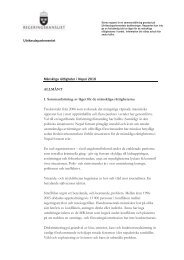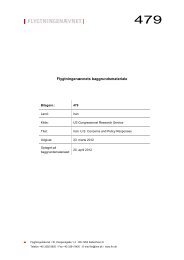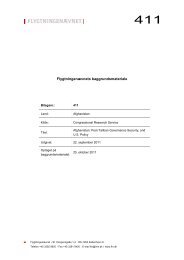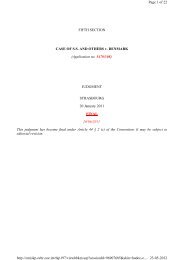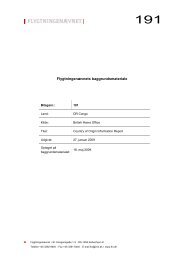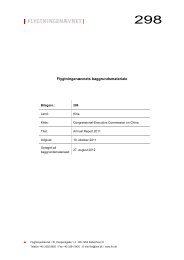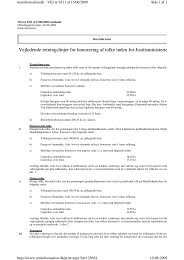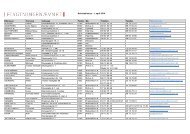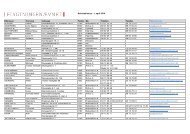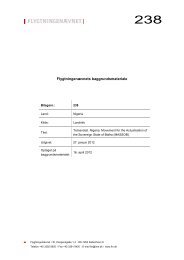Annual Report - National Human Rights Commission
Annual Report - National Human Rights Commission
Annual Report - National Human Rights Commission
Create successful ePaper yourself
Turn your PDF publications into a flip-book with our unique Google optimized e-Paper software.
Annexure 8<br />
○ ○ ○ ○ ○ ○ ○ ○ ○ ○ ○ ○ ○ ○ ○ ○ ○ ○ ○ ○ ○ ○ ○ ○ ○ ○ ○ ○ ○ ○ ○ ○ ○ ○ ○ ○ ○ ○ ○ ○ ○ ○ ○ ○ ○ ○ ○ ○ ○ ○ ○ ○ ○ ○ ○ ○ ○ ○ ○ ○ ○ ○<br />
○<br />
These rules would also include special sections to recognize and protect the health rights of<br />
various sections of the population, which have special health needs: Women, children, persons<br />
affected by HIV-AIDS, persons with mental health problems, persons in conflict situations,<br />
persons facing displacement, workers in various hazardous occupations including unorganized<br />
and migrant workers etc.<br />
●<br />
Enacting State Clinical Establishments Rules regarding health rights concerning the Private<br />
medical sector, detailing the provisions made in the <strong>National</strong> Act.<br />
●<br />
Enactment of State Public Health Protection Acts that define the norms for nutritional<br />
security, drinking water quality, sanitary facilities and other key determinants of health.<br />
Such acts would complement the existing acts regarding environmental protection, working<br />
conditions etc. to ensure that citizens enjoy the full range of conditions necessary for<br />
health, along with the right to accessible, good quality health services.<br />
●<br />
Substantial increase in State budgetary provisions for Public health to parallel the budgetary<br />
increase at Central level, this would entail at least doubling of state health budgets in real<br />
terms by 2009.<br />
●<br />
Operationalizing a State level health services monitoring mechanism, consisting of a State<br />
Health Services Monitoring and Consultative Committee to periodically review the<br />
implementation of health rights, and underlying policy and structural issues in the State.<br />
Half of the members of this Committee would be drawn from State level health sectorcivil<br />
society platforms. Corresponding Monitoring and Consultative Committees with civil society<br />
involvement would be formed in all districts, and to monitor urban health services in all<br />
Class A and Class B cities.<br />
●<br />
Instituting a Health <strong>Rights</strong> Redressal Mechanism at State and District levels, to enquire<br />
and take action relating to all cases of denial of health care in a time bound manner.<br />
●<br />
A set of public health sector reform measures to ensure health rights through strengthening<br />
public health systems, and by making private care more accountable and equitable. The<br />
minimum aspects of a health sector reform framework that would strengthen public health<br />
systems must be laid down as an essential precondition to securing health rights. An<br />
illustrative list of such measures is as follows:<br />
1. State Governments should take steps to decentralize the health services by giving control<br />
to the respective Panchayati Raj Institutions (PRIs) from the Gram Sabha up to the<br />
district level in accordance with the XI Schedule of the 73 rd and 74 th Constitutional<br />
Amendment of 1993. Enough funds from the plan and non plan allocation should<br />
bedevolved to thePRIs at various levels. The local bodies should be given the<br />
230<br />
<strong>National</strong> <strong>Human</strong> <strong>Rights</strong> <strong>Commission</strong> <strong>Annual</strong> <strong>Report</strong> - 2004-2005<br />
AR-Chapter-1-19-10-6-06.p65<br />
250<br />
7/17/06, 6:31 PM



